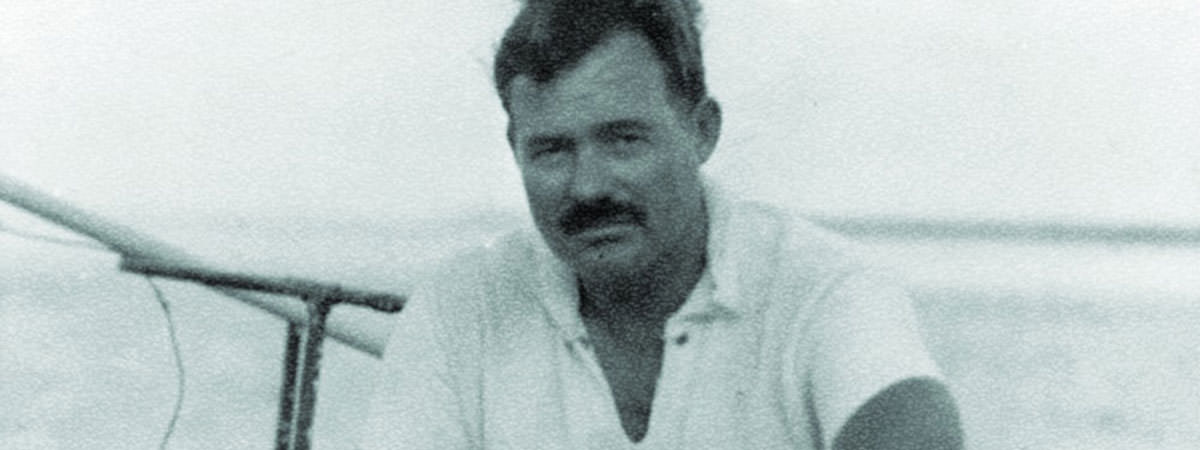Ernest Hemingway (July 21, 1899 – July 2, 1961) was a Nobel Prize winning American author who is widely regarded as one of the greatest modern writers. He published seven novels, six short-story collections and two non-fiction works during his lifetime while several more were published after his death. Hemingway had an eventful life during which he had a number of affairs, got married four times, was rejected by the military, was involved in numerous accidents and ultimately took his own life. Know more about one of the most famous writers of the 20th century through these 10 key facts on his life.
#1 HEMINGWAY WAS REJECTED BY THE US MILITARY
In October 1917, 18 year old Ernest Hemingway moved to Kansas, Missouri, and began working as a cub reporter for the Kansas City Star. During his time in the city, he was also actively trying to enlist in the army to serve his country’s effort in the First World War. United States had declared war earlier that year and joined the Allied Powers against Germany and Austria-Hungary. Hemingway was however finally rejected by the army in December 1917 for his poor eyesight.
Main Sources:-
Mellow, James R. 1992. “Hemingway A Life Without Consequences”. P45. Addison-Wesley Publishing Company.
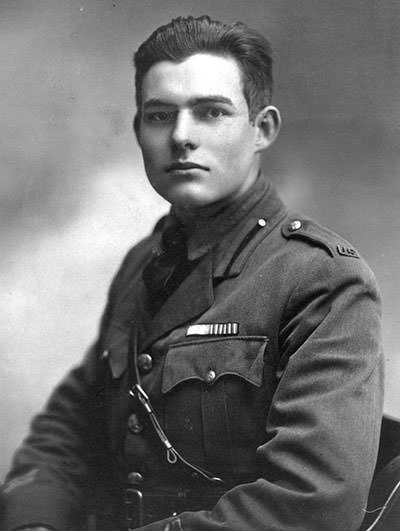
#2 HE WAS AWARDED FOR HIS BRAVERY DURING WWI
In early 1918, Hemingway got an opportunity to join the Great War. A group of Italian Red Cross officials had reached Kansas City on a recruitment drive, and Hemingway volunteered to join as an ambulance driver on the Italian Front. He arrived in Milan, Italy in June 1918 and was assigned to Red Cross’s Section Four, stationed at Schio, Italy. On 8th July, 1918, as Hemingway was delivering chocolate and cigarettes to 3 Italian soldiers at the front line in Fossalta, he was seriously wounded by a trench mortar explosion. Despite his wounds, Hemingway managed to assist some Italian soldiers to safety, for which he was decorated with the Italian War Merit Cross, the Croce al Merito di Guerra. The official citation would read:-
“Gravely wounded by numerous pieces of shrapnel from an enemy shell, with an admirable spirit of brotherhood, before taking care of himself, he rendered generous assistance to the Italian soldiers more seriously wounded by the same explosion and did not allow himself to be carried elsewhere until after they had been evacuated.”
Main Sources:-
Reynolds, Michael. 2000. “Literary Masters Vol 2 Ernest Hemingway”. P2,3. The Gale Group.
Mellow, James R. 1992. “Hemingway A Life Without Consequences”. P47,48, 57-61. Addison-Wesley Publishing Company.
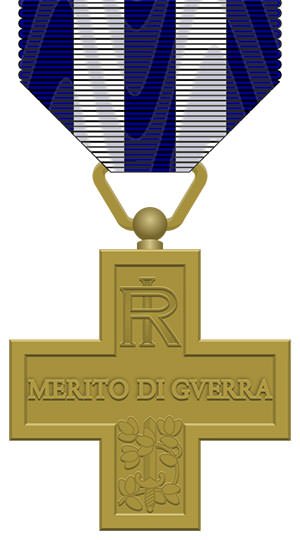
#3 SOME OF HIS STORIES WERE STOLEN
In 1922, Ernest Hemingway was living in Paris with his first wife Hadley Richardson. He had been married for over a year and was working as the foreign correspondent for the Toronto Star. In November that year Hemingway was sent on an assignment to Lausanne, Switzerland to cover the Peace negotiations being held in the city. Hadley during this time stayed in Paris nursing her cold, but in early December she decided on joining her husband in Switzerland. Hemingway was still in his early writing career and was looking to get his short stories published. In Lausanne, he had met the successful journalist and author Lincoln Steffens, with whom he had shared some of his work. Hadley had been aware of this and so while packing for her trip, she decided to carry along all of Ernest’s manuscripts, including the carbon copies, in a small suitcase. These were early Nick Adams stories about Michigan, the short stories Ernest had been working on for months.
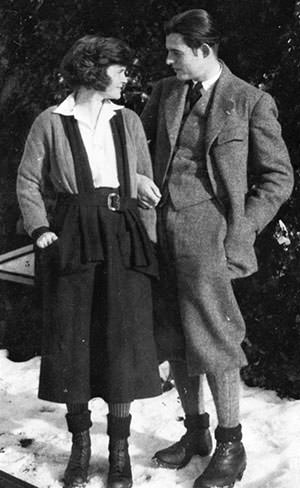
Hadley had thought that Hemingway would be able to work on them in the holidays and show more of his work to Steffens, but her planned surprise was about to go awfully wrong. After boarding her train and stowing her bags, Hadley decided to buy some water before the train started. When she returned, the case with the manuscripts was gone, and was nowhere to be found. Hemingway recalls the time when his wife first broke the news of the theft in his memoir A Moveable Feast.
“I had never seen anyone hurt by a thing other than death or unbearable suffering except Hadley when she told me about the things being gone. She had cried and cried and could not tell me. I told her that no matter what the dreadful thing was that had happened nothing could be that bad, and whatever it was, it was all right and not to worry. We would work it out. Then, finally, she told me. I was sure she could not have brought the carbons too and I hired someone to cover for me on my newspaper job. I was making good money then at journalism, and took the train for Paris. It was true all right and I remember what I did in the night after I let myself into the flat and found it was true.”
Main Sources:-
Hemingway, Ernest. 1964. “A Moveable Feast”. P73,74. Charles Scribner’s Sons, New York.
Mellow, James R. 1992. “Hemingway A Life Without Consequences”. P212. Addison-Wesley Publishing Company.
“Hadley Talks about the Lost Manuscripts”. The Hemingway Project.
#4 HE IS CONSIDERED PART OF “THE LOST GENERATION”
The term “Lost Generation” was first introduced to Hemingway by his Paris mentor Gertrude Stein. It would later be used in the epigraph of his 1926 novel The Sun Also Rises and gain popularity from there onwards. “Lost Generation” referred to the aimless and disoriented young men and women from the post World War I era, who had been scarred by the pain and sufferings inflicted in the Great War. The generation rejected the values of the times and rebelled against things like established moral behavior, gender roles and financial prudence. The term is also specifically used to refer to the great modernist writers and artists (especially expatriate American) that came out from that period including F. Scott Fitzgerald, Ezra Pound, Gertrude Stein, T. S. Eliot and Hemingway himself. It may also be noted that despite using and popularizing the term “Lost Generation”, Hemingway did not agree with Stein’s view. He informed her forcibly on more than one occasion that he was not, in any way “lost”.
Main Sources:-
Monk, Craig. 2010. Writing the Lost Generation: Expatriate Autobiography and American Modernism. P1. Iowa City, IA: University of Iowa Press.
Newman, Steve. “Ernest Hemingway — Gertrude Stein”.
#5 HE MARRIED FOUR TIMES IN HIS LIFE
Ernest Hemingway married four times in his life. His first wife Hadley Richardson was 8 years older to him and had met him at a party in Chicago in 1920. The couple were married from 1921 to 1927 and had a son (Jack) together. They separated due to Hemingway’s affair with Pauline Pfeiffer, who went on to become his second wife. Pauline was an accomplished journalist who wrote for Vogue in Paris. She had two children with Ernest during their 13 years as a couple (1927 – 1940). Similar to what happened with his first wife, Hemingway separated from Pauline once he had an affair with Martha Gellhorn. Martha was a novelist and a prominent war correspondent who was almost 10 years younger to Ernest. Their marriage would last only 5 years between 1940 and 1945. Hemingway would marry for the final time to Mary Welsh, another journalist by profession. The couple met in 1944 when they were both married to different people but went on to marry in 1946. The marriage would survive until the author’s death in 1961.
Main Sources:-
Kavanagh, Joanne (Apr 6 2021). “Who were Ernest Hemingway’s four wives?”. The Sun.
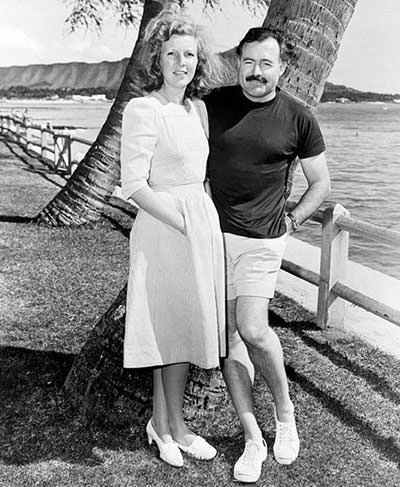
#6 HEMINGWAY WAS PRONE TO ACCIDENTS
Accidents which were often life threatening, were a common occurrence throughout the life of Ernest Hemingway. His eagerness to be in the thick of the action, reporting in conflict zones and passion for big game hunting, fishing, bullfighting and travelling, were contributors towards several of his injuries.
In 1918 serving for the Red Cross in World War I, Hemingway was severely wounded by an Austrian mortar shell. He was “so badly wounded in a burst of shellfire that he felt life slip from his body, ‘like you’d pull a silk handkerchief out of a pocket by one corner’”.
In Paris a few years later he was severely injured in the head while going to the toilet. He had mistakenly yanked the chain for the skylight instead of the flush box and the skylight fell on the head.
In late 1930 after a ten day hunting trip, Hemingway met with an accident yet again while driving back towards Billings, Montana. He had been blinded by the headlights of an oncoming car and drove his car into a ditch. He was seriously hurt and had broken his bones.
In the spring of 1935 while fishing for sharks near the island of Bimini, Hemingway yet again had a close shave with death. Having hooked a large shark, Hemingway was trying to bring the shark up on a gaff for a photograph. But the gaff split and hit the pistol Hemingway was holding. As the gun went off, the bullet ricocheted off the brass rail and fortunately struck Hemingway in the calves of both legs.
In May 1944 having arrived in London to cover World War 2, Hemingway was injured in another car accident. This time his head had crashed against the wind shield leading to serious concussion and a deep scalp wound that required 57 stitches.
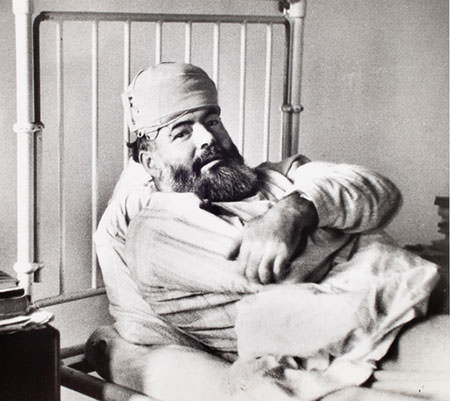
Finally in January 1954 while on a safari in Africa, Hemingway survived 2 more life threatening accidents in two days. During the first Hemingway along with his wife Mary crash landed in their chartered plane near the Murchison falls. Hemingway had dislocated his shoulder. The very next day, in the hope of returning, they boarded another small plane, which also crash landed and caught fire. Mary managed to escape from one of the small windows and the pilot, at the last moment, exited from the front. Hemingway however found his port door jam-closed by a piece of metal. With the flames leaping in the cabin, he used his head as well as his already dislocated shoulder as a battering ram on the door, forcing his way out onto the lower left wing.
Main Sources:-
Latson, Jennifer (Jul 21, 2015). “5 Times Ernest Hemingway Cheated Death”. Time.
Mellow, James R (1992). “Hemingway: Life Without Consequences”. P359, 425, 487, 531, 587. Hodder and Stoughton, London.
#7 HE WAS AWARDED THE NOBEL PRIZE IN 1954
Ernest Hemingway seems to have long coveted the Nobel Prize but had always denied wanting it. In his letters and writing he may be seen as ridiculing it’s recipients and the prize itself along with a desire for the same. In 1941, he felt close after the spectacular success of For Whom The Bell Tolls but the book could only get him a Pulitzer nomination. However Hemingway came up with yet another masterpiece a decade later. Published in 1952, The Old Man and the Sea was a spectacular success and served to reinvigorate Hemingway’s literary reputation and prompted a re-examination of his entire body of work. In 1953, The Old Man and the Sea was awarded the Pulitzer Prize for Fiction. Moreover, it was cited by the Nobel Committee as contributing to their awarding of the Nobel Prize in Literature to Ernest Hemingway in 1954 “for his mastery of the art of narrative, most recently demonstrated in The Old Man and the Sea, and for the influence that he has exerted on contemporary style.”
Main Sources:-
Mellow, James R (1992). “Hemingway: Life Without Consequences”. P527,588. Hodder and Stoughton, London.
“The Nobel Prize in Literature 1954”. Nobelprize.org.
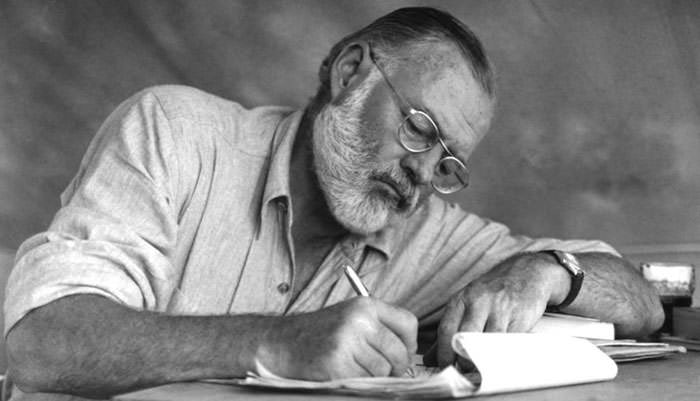
#8 HEMINGWAY COMMITTED SUICIDE AT THE AGE OF 61
On the morning of 2nd July, 1961, Ernest Hemingway shot himself and committed suicide at his home in Ketchum, Idaho, USA. His death was not much different to that of his father Clarence Hemingway, who had also taken his own life in 1928. During the later stages of his life, Hemingway had been diagnosed with several ailments which included depression, hypertension and hereditary haemochromatosis; whereby the excessive accumulation of iron in tissues culminates in mental and physical deterioration. Excessive drinking and multiple head injuries from accidents throughout his life may have been other contributing factors.
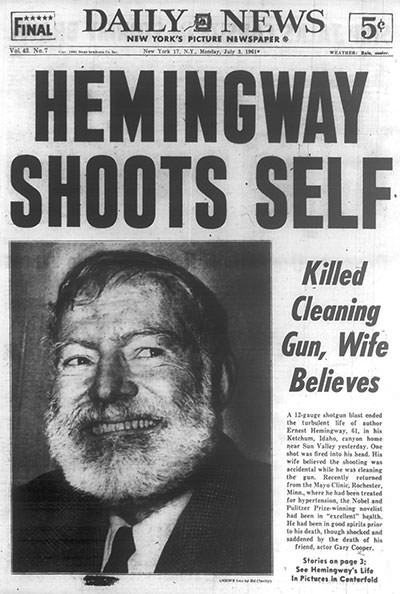
There have been more studies and speculation regarding the death of Ernest Hemingway over the years. FBI records revealed in 1983 pointed to the fact that Hemingway was being watched by the intelligence agency for a good part of 2 decades. The author had been frantic over the issue and it may have contributed in his decision. A 2006 study by Psychiatrist Christopher D Martin from Houston, Texas, based on 15 or so biographies and memoirs of Hemingway diagnosed the author with “bipolar disorder, alcohol dependence, traumatic brain injury, and probably borderline and narcissistic personality traits.” The psychiatrist also underlines Hemingway’s childhood experiences as the defining problem of his life.
Main Sources:-
Gilroy, Harry (Aug 23, 1966). “Widow Believes Hemingway Committed Suicide; She Tells of His Depression and His ‘Breakdown’ Assails Hotchner Book“. The New York Times.
Walsh, John (Oct 23, 2011). “Being Ernest: John Walsh unravels the mystery behind Hemingway’s suicide”. Independent.
Martin, Christopher D (2006). “Ernest Hemingway: a psychological autopsy of a suicide”. National Library of Medicine.
Beaumont, Peter (Jul 3, 2011). “Fresh claim over role the FBI played in suicide of Ernest Hemingway”. The Guardian.
#9 HE WAS ON FBI’S WATCH FOR MANY YEARS
In 1983, 22 years after Hemingway committed suicide, Jeffrey Myers, a professor from the University of Colorado uncovered a 124 page FBI file on the author using the Right to Information Act. The document unveiled that the FBI was keeping a close watch on Hemingway long after he had completed his assignment with them, and until his death in 1961. The FBI director J. Edgar Hoover himself made sure he was aware of Hemingway’s whereabouts. During his later years, Hemingway had seemed paranoid to many of his friends. He would often say things suggesting that the FBI was following him, intercepting his mail, auditing his accounts and ‘bugging everything’. Since the author was suffering from mental disease and depression in these times, these beliefs were seen as the signs of his mental decline. Disclosure of the information led to the speculation that the anguish over the FBI’s monitoring may have contributed to Hemingway’s 1961 suicide.
Main Sources:-
Beaumont, Peter (Jul 3, 2011). “Fresh claim over role the FBI played in suicide of Ernest Hemingway”. The Guardian.
FBI Records: The Vault -Ernest Hemingway
#10 THE HEMINGWAY CURSE
Ernest Hemingway’s suicide on 2nd July, 1961 was not the first in his family and would not be the last. There are quite a few instances of such tragedies in the Hemingway family tree, which makes it difficult to ignore them as mere coincidences. In 1928, Ernest’s father Clarence Hemingway had shot himself. He was ill with diabetes and heart disease, had suffered financial losses and was depressed. Three of his children including Ernest would also go on to take their own lives. The bouts with mental illness and tragedies of suicide would continue to plague the next generations of the family, leading some to refer it as the “Curse of the Hemingways”.
After Ernest shot himself in 1961, his younger sister Ursula Hemingway died from a pill overdose five years later. She had been fighting cancer and depression. His youngest sibling and only brother Leicester also committed suicide in 1982, after years of health problems caused by diabetes. In the next generation, Ernest’s youngest child Gregory Hemingway (later known as Gloria) was diagnosed with bipolar depression. In 2001, Gloria (Gregory) was arrested in Miami for indecent exposure and a few days later found mysteriously dead in her jail cell. In 1996, another tragedy struck the family when one of Ernest Hemingway’s granddaughters ended her own life taking an overdose of sedatives. Margaux was the daughter of Ernest’s eldest son Jack Hemingway and rose to fame as a supermodel and actress in the late 1970s.
Main Sources:-
Ornum, William Van (27 Jan,2013). “Suicide and the Hemingway Family”. American Mental Health Foundation.
Ogle, Connie (Jul 25, 2016). “With 7 suicides in her family, Mariel Hemingway declares war on depression”. Miami Herald.
Gilroy, Harry (Aug 23, 1966). “Widow Believes Hemingway Committed Suicide; She Tells of His Depression and His ‘Breakdown’ Assails Hotchner Book“. The New York Times.
7 Apr, 2015. “Mariel Hemingway reveals the story of her famous family haunted by depression, alcoholism and suicide in two new memoirs”. Daily Mail

